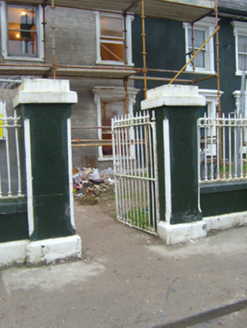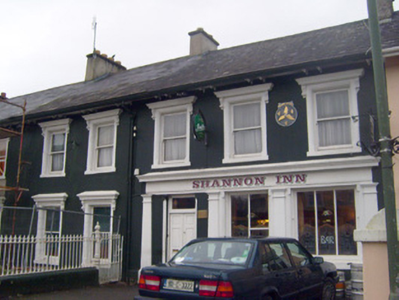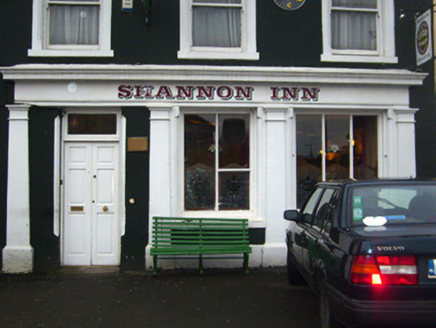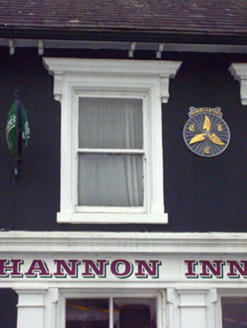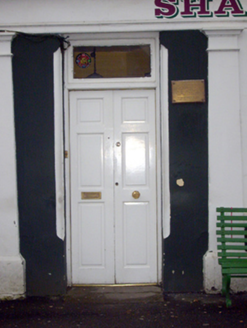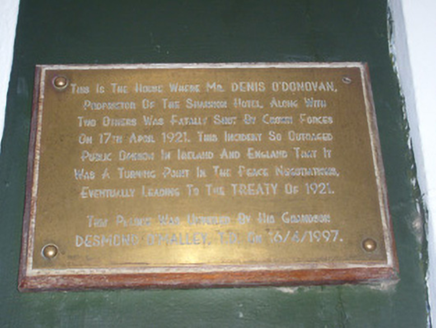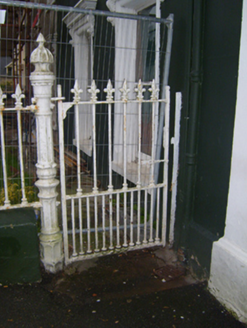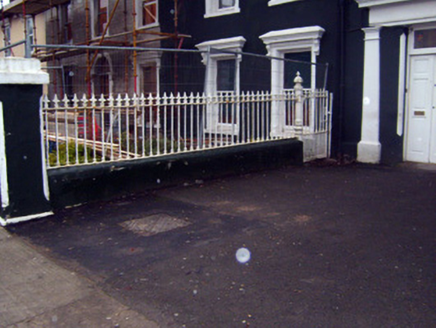Survey Data
Reg No
21807012
Rating
Regional
Categories of Special Interest
Architectural, Artistic
Previous Name
Shannon Hotel
Original Use
House
In Use As
House
Date
1790 - 1810
Coordinates
166191, 162628
Date Recorded
11/12/2007
Date Updated
--/--/--
Description
Terraced five-bay two-storey house, built c. 1800, having render shopfront to front (south-west) elevation. Pitched slate roof with rendered chimneystacks, overhanging eaves having timber brackets and cast-iron rainwater goods. Lined-and-ruled rendered walls with render plinth course and recent bronze plaque. Square-headed openings having painted stone sills, render surrounds with entablatures and consoles over one-over-one pane timber sliding sash windows. Shopfront comprising render pilasters supporting fascia and cornice over square-headed openings having Doric style pilasters supporting fascia with render cornice. Square-headed display windows having timber mullions and flanking pilasters. Square-headed opening with glazed overlight over double-leaf timber panelled doors. Pair of rendered chamfered square-profile piers to south-west having render caps and single-leaf cast-iron gate. Rendered boundary walls with cast-iron railings terminating in ornate cast-iron pier having single-leaf gate.
Appraisal
This modest house, built as part of a terrace, is characterised by its subtle classically inspired façade and regular fenestration rhythm. Retaining salient features such as the render window surrounds, sash windows and ornate shopfront. The house is of further historical significance, being the site where Denis O'Donovan and two others were killed by Crown Forces, an event which had a significant impact of the peace negotiations, and ultimately the Treaty of 1921. Plaque to interior reads: 'This is the house where Mr Denis O'Donovan, proprietor of the Shannon Hotel, along with two others was fatally shot by crown forces on 17th April 1921. This incident so outraged public opinion in Ireland and England that it was a turning point in the peace negotiations, eventually leading to the Treaty of 1921. This plaque was unveiled by his grandson Desmond O'Malley, T.D. on 16/4/1997.'
